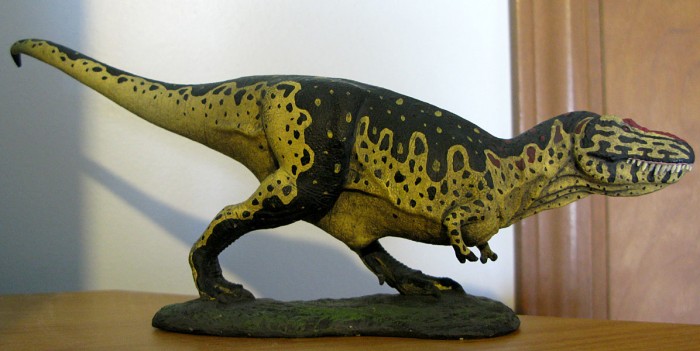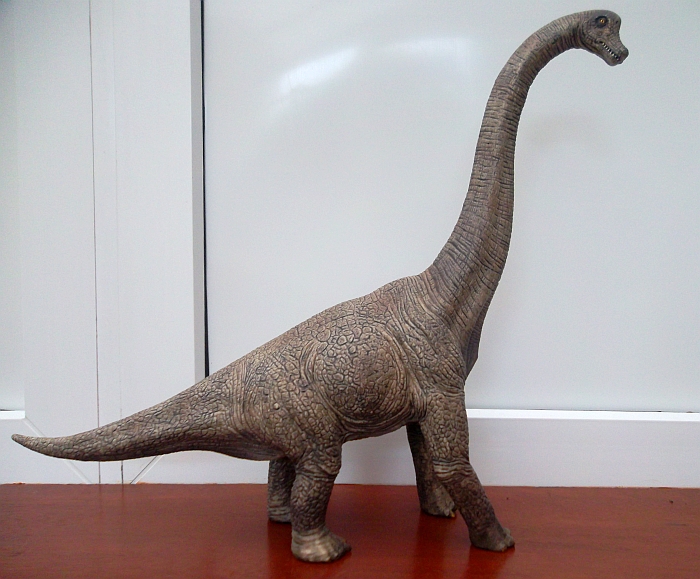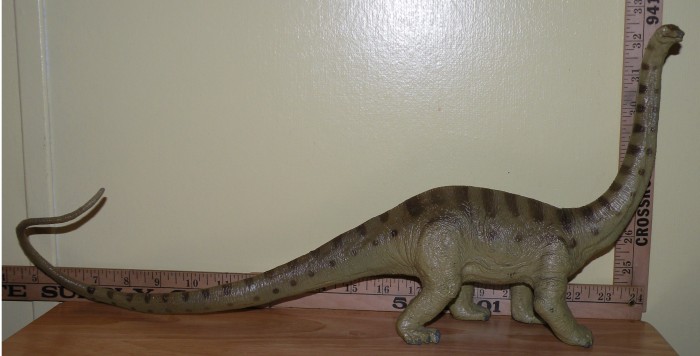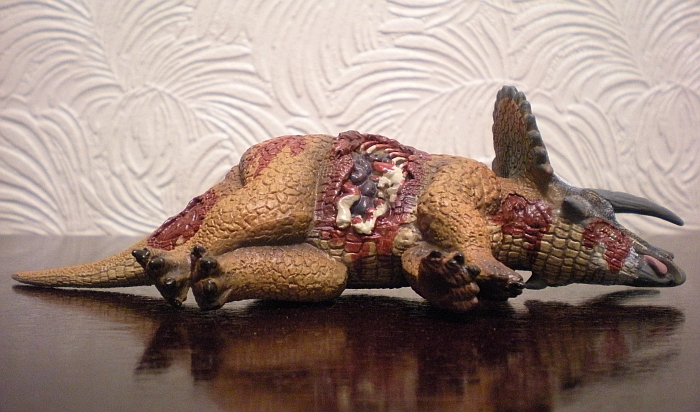
Review and photos by Tyrantqueen.
For my first Dinosaur Toy Blog review I am going to look at the 1850s-style Iguanodon in the Oldies desktop model series by Kinto/Favorite co. The Oldies series of replicas is intended to be a nostalgic take on outdated interpretations of dinosaurs from yesteryear.
Read more

Review and Photos by Patrick Bate (Pixelboy). Edited by Plesiosauria.
I’ll admit, I’m a picky collector. I lack the completionist drive to amass a proper collection, and only pick out pieces that really stand out to me as exceptional (and, for my wallet’s sake, affordable).
Read more

Schleich have attracted a lot of derision for their often diabolical theropods (knuckle-dragging Spinosaurus, anyone?), but – for whatever reason – tend to fare somewhat better when it comes to herbivorous dinosaurs. This brachiosaur sculpt dates from 2007 and really isn’t too bad at all.
Read more

I’m pleased to announce The Dinosaur Diorama Contest 2012, sponsored by Dan’s Dinosaurs, is now open! For several reasons there was no contest in 2011, but now, we’re back for 2012! And we have prizes again!
First place winner of the 2010 contest: ‘The Bully Boyz’ by Paleoferroequine
The rules and regulations for the 2012 contest are as follows:
-Entry is free.
Read more

Diplodocus is one of those all American sauropods every kid grew up with, right alongside Apatosaurus and Brachiosaurus. Described in 1878 it is still the longest known sauropod from a complete skeleton. It is no wonder then, that the Carnegie Collection would include this animal in their original 1988 lineup of museum quality replicas.
Read more

I’ve been able to tear myself away from our sparkly new Dinosaur Toy Forum (please do register if you aren’t already a member) to dedicate a little time to our old friend the Dinosaur Toy Blog.
It isn’t easy to find a respectable range of dinosaur toys in brick and mortar establishments these days.
Read more

For many collectors, young and old, part of the appeal of dinosaur figures – perhaps even their primary appeal – is that they help render long-lost worlds as exciting and vibrant as the one around us today. They bring to life creatures known only from rocks in a vivid, three dimensional, colourful and exciting way.
Read more

When it comes to dinosaurs, I believe there are essentially two attributes that attract us. They are either fearsome, or fancy. The fearsome ones are easy enough to spot, bearing a great deal of menace and lethality. Others may seem less terrifying, but fall into the “fancy” category.
Read more

Review by Ikessauro
For those who don’t know me, I’m Patrick, a member of the DTF, AKA “Ikessauro”. I live in Brazil and started collecting dinosaurs about 6 or 7 years ago. Back then the best dino figures I could find around here were the ones from Salvat collection.
Read more

In the world of toy dinosaurs few have suffered like the Baryonyx. Despite repeated attempts to fashion a model of this spinosaurid, only one can be said to have been successful and it was the first ever produced, the Invicta 1989 figure.
Read more

With the 2012 release of the highly anticipated Wild Safari Acrocanthosaurus, I thought it only fitting to do a review on the older Carnegie model, which I have only just recently been able to obtain. Acrocanthosaurus was an early Cretaceous relative of theropods such as Carcharodontosaurus and Giganotosaurus.
Read more

So – and forgive me if you’ve heard this already – Papo have a new
T. rex out for 2012. And now, finally, we’ve all got the chance to get our greasy paws on one. Although most of you probably decided a long time ago whether or not you were going to grab one of these, hopefully this review will be useful for the very few still sitting on the fence…
There’s one thing always worth remembering about Papo – they’ve never claimed any sort of scientific authority or authenticity.
Read more















